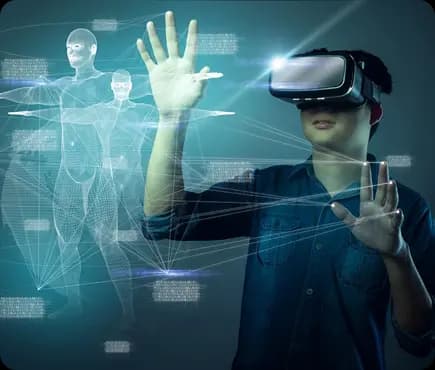
How Spatial Computing is Redefining Business Operations Across Industries in 2025.
Disclaimer: The views shared in this blog are for informational purposes only and highlight general trends in spatial computing.
Jonnah Razel
What is Spatial Computing?
1. Discovery & Custom Roadmaps
In 2025, spatial computing is no longer experimental—it’s the backbone of modern business operations.
Key Ways Spatial Computing is
Transforming Industries
1. Retail & eCommerce: Personalized Shopping Experiences
Retailers are using AR and VR to turn shopping into an experience. Virtual showrooms, AR try-ons, and 3D product visualization are now standard tools for engaging buyers and boosting conversions.
2. Real Estate & Architecture: Smarter Visualization
Through platforms like Obnest, buyers can walk through properties virtually, while architects leverage 3D design and MR to collaborate on blueprints in real time—reducing costs and errors.
3. Healthcare: Training & Patient Care
Spatial computing is being used in VR-based medical training, remote patient care, and AR surgical assistance—improving outcomes and reducing risks.
4. Automotive & Navigation: Smarter Mobility
Solutions like Obpark AR Smart Car Navigation System bring real-time overlays, parking availability, and navigation insights directly into drivers’ views, enhancing both safety and convenience.
5. Enterprise & Collaboration: The Future of Work
With MR and VR, employees can now collaborate inside immersive environments—reviewing 3D models, analysing spatial data, and working across borders without the need for physical presence.
Why Businesses Can’t Ignore Spatial
Computing in 2025
Efficiency Gains
Automation of workflows, real-time data integration, and better resource planning.
Customer Engagement
Immersive experiences create deeper emotional connections with brands.
Competitive Edge
Companies adopting spatial computing early are leading the digital transformation curve.
The Future of Business is Immersive
1. Discovery & Custom Roadmaps
At Obrive Industries, we empower companies to step into this immersive future through pioneering solutions like Obpark and Obnest, and a full suite of AR/VR/MR services designed for tomorrow’s challenges.

